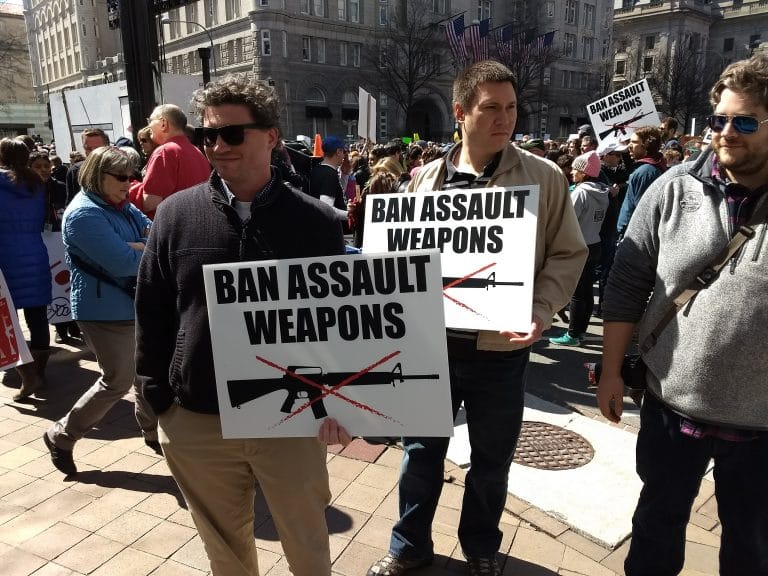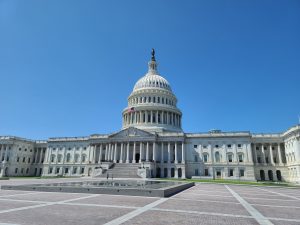It’s impossible to talk honestly about gun-death statistics in America without deciding how to categorize suicides.
Even with the unfortunate recent surge in homicide, suicides still represent most gun-related deaths. In 2020, the most recent year for which the CDC provides data, the US experienced 45,222 gun-related deaths. Of those, 24,292 were suicides compared to 19,384 gun-related homicides. That means suicides comprised 53.7% of gun-related deaths in 2020, with homicides accounting for 42.9%. The remaining balance of about 3.4% is a mix of accidental deaths (535), law enforcement shootings (611), and gun-related deaths of undetermined causes (400).
So, suicide is undoubtedly a huge part of the discussion when it comes to gun-related deaths in America. There is no debate about that.
However, disputes arise when suicide is mixed in with gun homicide, and the total is labeled “gun violence.” All major gun-control advocacy groups count gun violence in this way.
The Violence Policy Center runs a website called “Concealed Carry Killers,” which purports to track “killers” who had concealed carry permits, and it reports 2,240 such cases since 2007. The problem is, according to the website’s own data, over 1,200 of those “killers” were people who succumbed to suicide without harming anyone else. While insulting the memory of these individuals by calling them “killers” may be the most shameful example of the problem with conflating different kinds of gun deaths, it is not uncommon for gun-control advocates to include suicide statistics in their gun violence counts to make a point that homicide data alone does not allow them to make.
Everytown for Gun Safety, the country’s largest gun-control group, recently used the mixed count to make definitive claims about gun control laws and their supposed effect on gun violence.
“We’ve ranked all 50 states on the strength of their gun laws—and compared those rankings with each state’s rate of gun violence,” the group tweeted late last month. “The result is clear: The stronger a state’s gun safety laws, the fewer people die by gun violence.”
Their ranking, of course, depends on counting suicides along with homicides. Their “gun violence rate” is simply a combined total of all gun deaths in each state. If they only compared states by gun-related homicide and excluded suicide, the data would not support their conclusions.
For instance, there is no correlation between a state’s Giffords Gun Control grade and its intentional homicide rate.
Of course, gun suicides remain a vital part of any discussion about gun deaths. But they are not relevant to a conversation about “gun violence” or discussions of gun-control measures
For one, it is entirely misleading to call suicides “gun violence” because that term makes most people think of crimes against other people, not self-harm. Moreover, while the US saw 24,292 gun-related suicides in 2020, it also had another 20,930 suicides that were completed via some other method. Yet no one refers to suicide by hanging as “rope violence,” nor do they call scenarios where someone jumps to their death “bridge violence.” Those phrases would probably strike most as ridiculous, but gun-related suicides are frequently included in gun violence statistics without major media outlets batting an eye.
Additionally, there is some evidence that guns have not dramatically increased the rate of suicide in the United States. While there is no denying that a suicide attempt with a gun is more likely to have a tragically irreversible result than most other methods, OECD data shows the US suicide rate is not abnormal compared to other countries. While the US rate of 14.1 suicides per 100,000 people is undoubtedly on the higher end of the normal range among wealthy countries, it is still within that normal range. Our rate is below that of Japan (14.6), Belgium (15.2), and South Korea (24.1), all countries with far stricter gun laws and far fewer firearms.
Packaging gun suicides with gun homicides as a justification for enacting new gun restrictions is faulty for another reason: only a few gun-control proposals seek to address suicide.
For example, Everytown rates California #1 in the country because it claims that the strength of the state’s gun laws has led to a “gun-violence rate” (i.e., gun-death rate) of 8.5 per 100,000, the lowest in the country. However, California’s gun-related homicide rate is nothing special at around 4.4 per 100,000, only slightly better than its pro-gun neighbor Arizona (5.1 per 100,000) and below that of numerous other pro-gun states. But its suicide rate, the seventh lowest in the country according to the CDC’s 2020 data, leads to its low overall gun-related death rate.
That California has a comparably low suicide rate is commendable, but it likely has little to do with the state’s gun control policies because very few of its laws aim to reduce suicide. Everytown’s website praises California for a number of gun control laws, including universal background checks, restrictive concealed carry permitting, declining to implement a “Stand Your Ground” law, prohibitions on “assault weapons,” regulations of “ghost guns,” restrictions on “high-capacity magazines,” limitations on where guns can be carried, and much more.
But none of those things have any bearing on suicide. Most suicidal people will pass a background check, they don’t need a carry permit to have a gun in the home, and “Stand Your Ground” laws, as well as laws restricting certain rifles or magazines, make it no more difficult for someone to harm themselves.
Of the long list of gun laws that Everytown applauds California for, only three could even conceivably reduce suicide: red flag laws, mental health records reporting requirements, and secure storage requirements. Assuming they work as intended (and I have no data to confirm that they do), red flag laws could theoretically disarm someone who is a danger to themselves. That sort of intervention could conceivably prevent somebody experiencing suicidal ideation from going through with it if they aren’t committed to finding an alternative means. Similarly, mental health record reporting requirements may ensure some suicidal people cannot buy guns. Again, assuming they do not substitute another method, maybe that can prevent someone’s suicide too. Lastly, it is at least conceivable that safe storage laws can stop suicidal individuals in a household from accessing firearms owned by a family member.
So, it should be conceded that a few of the measures Everytown includes appear to have some chance of reducing gun-related suicide.
However, Everytown lists around 40 different gun-control measures that California has enacted, and only a handful can even arguably affect gun-related suicide rates. Suicides make up over half of Everytown’s overall gun violence statistics, but only a small minority of their proposed solutions for gun violence are relevant in any way to gun-related suicide.
Both sides of this debate should embrace transparency in discussing these issues. Certainly, suicide victims deserve that modicum of respect. Suicide prevention is an important priority, and Americans on all sides of the gun issue ought to work toward finding the best ways to reduce the use of guns for that purpose. However, conflating gun suicide with gun violence is a disservice to that cause which only serves to confuse and mislead people.






